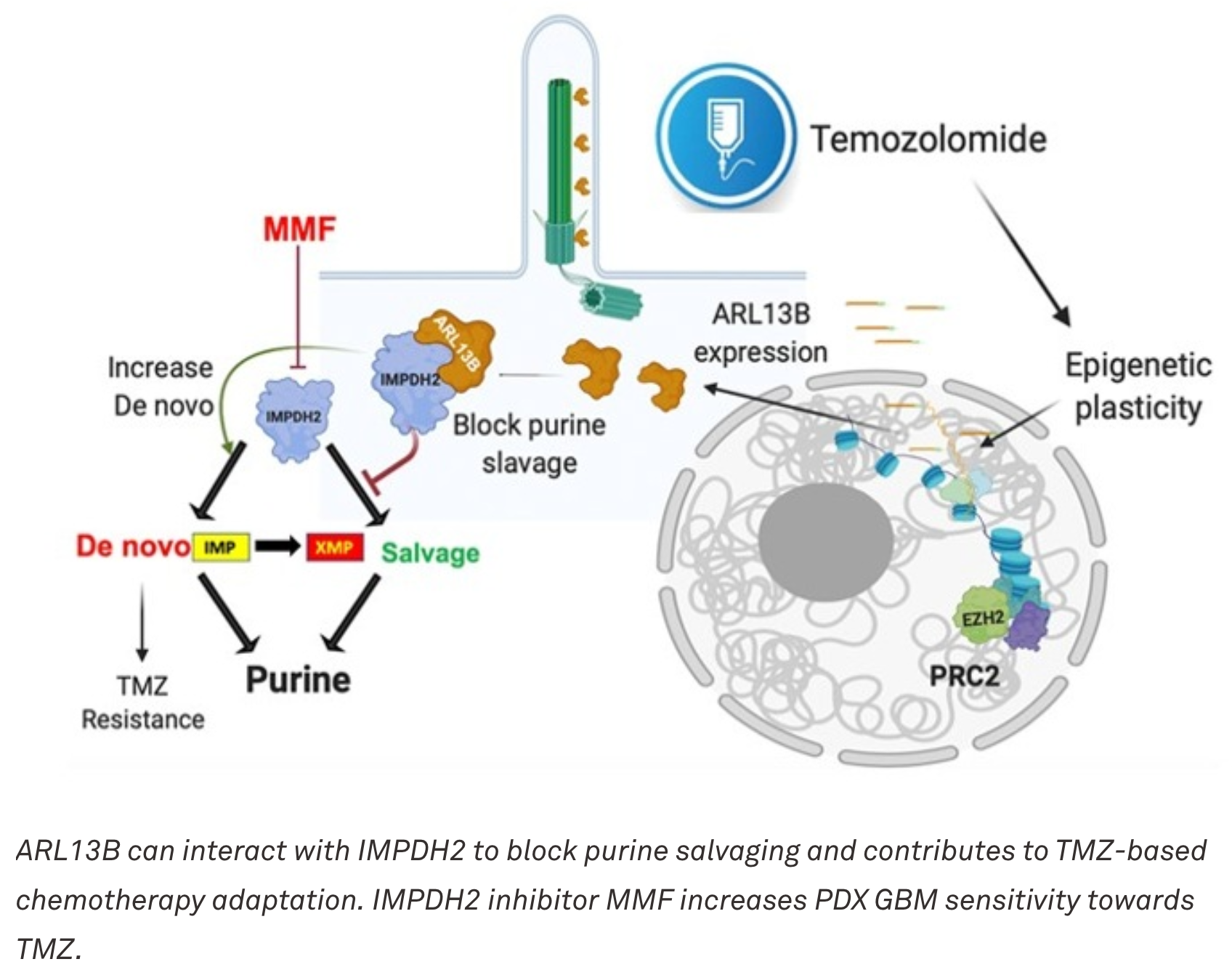Targeted Therapy for Glioblastoma via Purine Metabolism Modulation
NU 2019-086
INVENTORS
- Atique Ahmed*
- Cheol Park
- Jack Shireman
SHORT DESCRIPTION
This technology introduces a targeted approach for glioblastoma treatment that modulates purine biosynthesis by targeting the ARL13B-IMPDH2 interaction using repurposed FDA-approved and internationally-used drugs.
BACKGROUND
Glioblastoma is an incurable, aggressive form of cancer with low survival rate, high recurrence, and limited treatment options. Existing treatments, such as temozolomide, face challenges due to rapid development of chemoresistance, highlighting the critical need for alternative strategies. Repurposing clinically proven drugs offers a promising short-term pathway to improve patient outcomes while bypassing lengthy new drug development processes.
ABSTRACT
Northwestern researchers have identified ARL13B as a novel regulator of the purine biosynthesis pathway, which glioblastoma cells depend upon for aberrant proliferation. The current standard of care therapy for glioblastoma is an alkylating chemotherapeutic agent called temozolomide (TMZ) which exerts its primary form of toxicity through DNA alkylation of purine bases, which are then recycled by cancer cells using the salvage purine biosynthesis pathway. By engaging directly with IMPDH2, the key rate limiting enzyme for purine biosynthesis, ARL13B enables de novo purine synthesis, allowing cancer cells to evade TMZ-induced DNA damage. Leveraging FDA-approved compounds such as CellCept and internationally-used drugs like Mizoribine, the inventors demonstrate that targeted disruption of the ARL13B-IMPDH2 interaction along with TMZ treatment promotes use of the salvage purine biosynthesis pathway in glioblastoma cells, leading to robust survival benefits for in vivo and in vitro models of glioblastoma. This strategy holds potential to serve as an adjunct to current therapies, thereby potentially transforming the treatment paradigm for glioblastoma patients.
APPLICATIONS
- Novel treatment strategy for chemoresistant glioblastoma
- First-line or secondary therapy option that expands treatment choices for patient subpopulations with therapeutic resistance
ADVANTAGES
- Utilizes FDA-approved and internationally-studied drugs to expedite treatment delivery
- Reduces developmental costs compared to novel drug discovery
- Can be combined with existing chemotherapeutic alkylating agents to enhance efficacy
PUBLICATIONS
- Shireman JM, Atashi F, Lee G, Ali ES, Saathoff MR, Park CH, Savchuk S, Baisiwala S, Miska J, Lesniak MS, James CD, Stupp R, Kumthekar P, Horbinski CM, Ben-Sahra I, Ahmed AU. De novo purine biosynthesis is a major driver of chemoresistance in glioblastoma. Brain. 2021 May 7;144(4):1230-1246.
IP STATUS
Issued US Patent 11,786,542
Patent Information:
| Title |
App Type |
Country |
Serial No. |
Patent No. |
File Date |
Issued Date |
Expire Date |
Categories:
Life Sciences > Therapeutics
Keywords:
Cancer/Oncology
Repurposed Drugs
Therapeutics